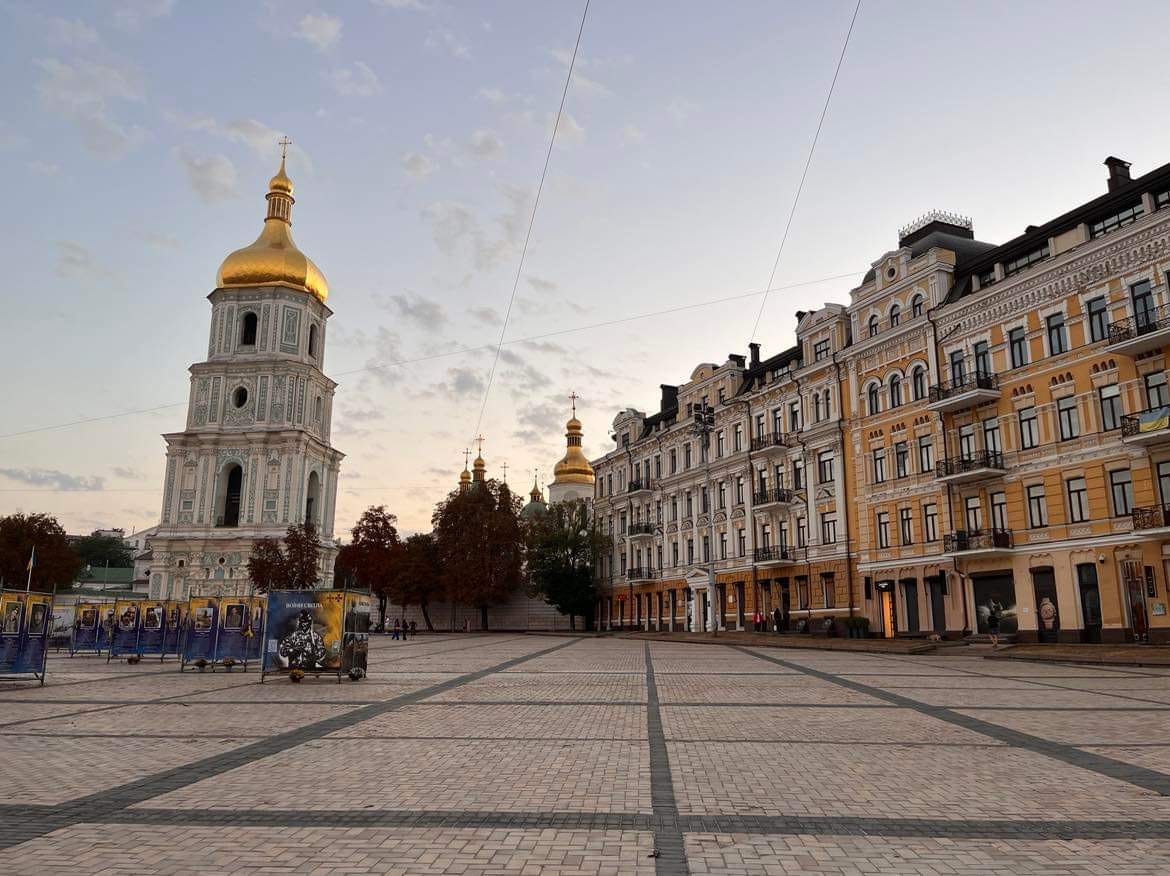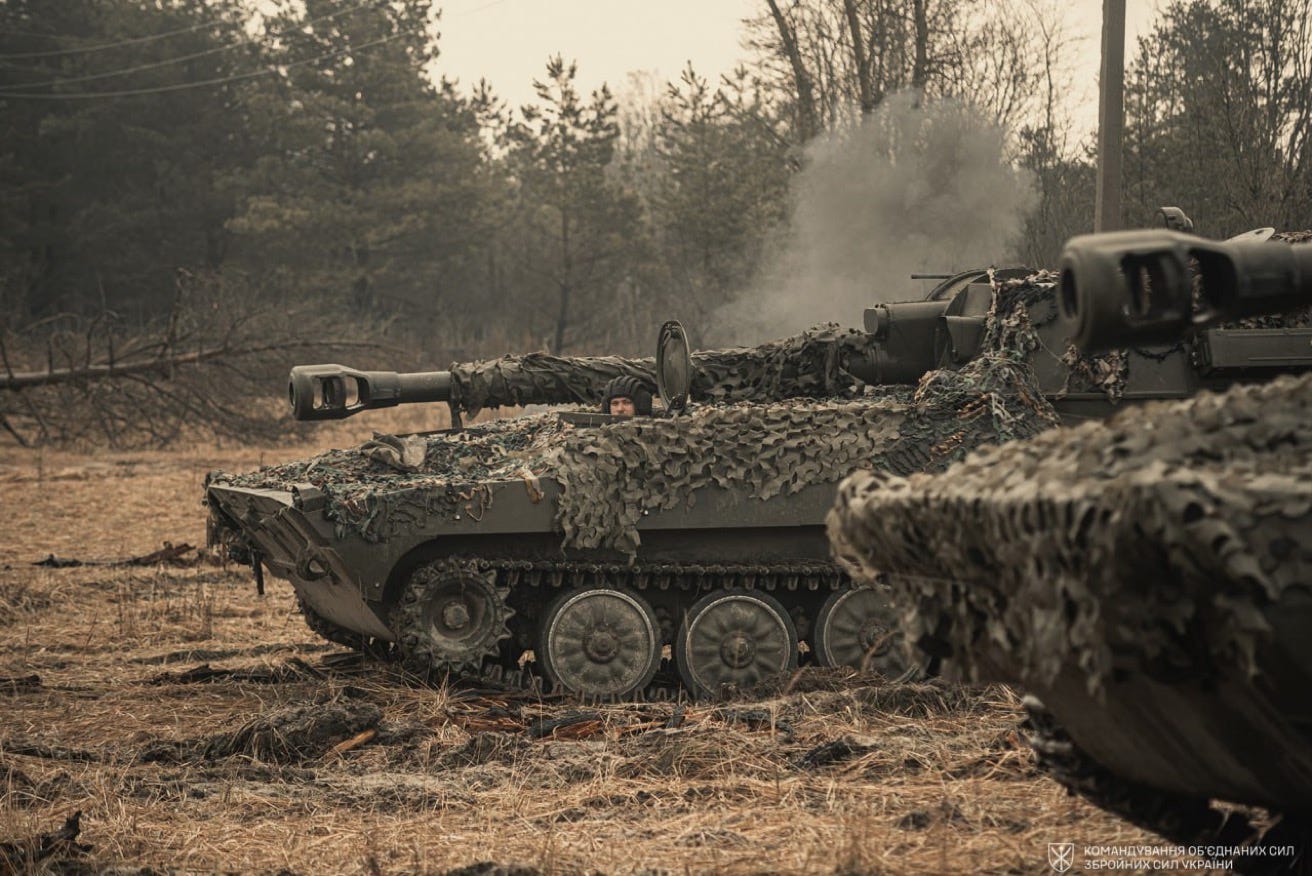If you follow me on social media, you may know that I am back in Kyiv. This is my third trip to Ukraine over the past year, and to be honest, Kyiv is just such a lovely city to visit and to walk around.
Kyiv is full of interesting people and interesting buildings. It is easy to feel a dissonance however, with people appearing to go about their normal lives while a massive struggle continues on the ground, in the skies and in the information domain to throw back the Russian invaders. But such is the nature of war. At the end of the day, the relative normalcy in Kyiv is what the Ukrainian Armed Forces are fighting for.
My visit this time is split between two efforts. First, I want to keep learning about Ukraine. You can read all the books you want about the history and culture of Ukraine (and I have read quite few), but nothing beats walking the ground and talking to people. So, each journey here helps me expand my understanding and appreciation of this amazing nation.
Second, I am exploring the key elements of what I describe as The Ukrainian Way of War.
The Ukrainian military - with doctrine and equipment from Soviet times and from NATO - is a unique hybrid organisation. While there are foundations in Ukrainian history for its current organisations, culture, equipment and thinking, the events of the last 18 months (indeed since 2014) appear to have led the Ukrainian armed forces to rethink many elements of combat operations, personnel development, logistics, operational strike, learning and adaptation, human-machine teaming, influence operations, meshing civil and military intelligence, and command and control.
It’s a hypothesis, and I am keen to explore it further. To be fair, there are many excellent battlefield studies, especially from Jack Watling and Michael Kofman, that point in this direction. However, the institutional elements of the Ukrainian Armed Forces - those strategic capabilities that enable a military to fight a war, not just battles and campaigns - are what I am examining during this visit. This includes:
Command and control. This includes how digital battle command systems are improving coordination and closing ‘detection to destruction’ times. Also, how is the Ukrainian high command coordinating all the various ground, air, maritime and influence campaigns concurrently?
Leadership models. How have UAF leadership models and training approaches evolved since February 2022? What are the strengths and weaknesses of the current approach.
Training. What is the difference between pre-war training and education and training now. What are the gaps and opportunities individual and collective training.
Culture. What is the status of the transition from older Soviet cultures to Ukrainian and western-oriented models for training, organising and fighting.
Supply. Field logistics and strategic supply including developments in industry.
Strike operations. How has the evolution of operational and strategic strike operations been coordinated with ground operations planning and execution, and what does this growing capability mean for how Ukraine will fight over winter and into 2024?
Innovation, learning and adaptation. System learning processes, analysis and dissemination. How are lessons collected from the battlefield and shared at training institutions and with other fighting formations. How is R&D conducted to support battlefield requirements – for the close fight but also for longer range recon and strike activities?
The Ukrainian military has more experience in modern war than any other nation, and the warfighting model it has developed should be studied for its broader application in other nations. Below is a short summary of some of my initial meetings in Kyiv.
Training
If an army is a tree, then it’s training institutions are its roots and trunk. Units might be raised or cut, but if you remove key elements of a training institution, sustaining or building an army is very difficult.
On 26 September, I was able to speak with the head of training for Ukrainian ground forces, Major General Nykoliuk. We had a fabulous discussion, and at a later point, I will write up a detailed exploration of how Ukraine‘s ground force training is evolving. However, the key themes of our discussion included the following:
Time. This is the driver for many aspects of training - there is never enough because of the demands of providing battlefield replacements. It restricts how long basic training and leader courses are, which then places a training liability on units that receive these personnel.
Leader training. Additional emphasis is being placed on battalion and brigade level training, as well as staff training for these units and formations.
Foreign Training. This is, overall, a net positive for Ukraine. However, a constant dialog is required to ensure the training being delivered overseas is relevant for when the soldiers arrive back in Ukraine. This can often be a moving target due to ongoing battlefield adaptations by both sides.
Digital Transformation. A range of activities are underway to improve training efficiency. This includes simulation, and networking simulation centres. However, capacity is currently limited, for both soldier training and HQ staff training. More is needed as is updated software.
Fleet Diversity. The huge array of NATO weapon systems is a challenge for training - for both operators and maintainers. At the same time, not all equipment comes with training stock or some of the software required for training.
Adaptation. This is a key issue. The battlefield is changing quickly, and therefore training institutions need to keep pace. There are several methods of collecting lessons and feeding them back into the training system. And while speed is necessary, capacity limits sometimes mean that adaptation in training is not as fast as desired.
Procurement
This was a fascinating conversation with a senior official from procurement at the Ministry of Defence. The focus was on the global arms market and its capacity. The global arms market, according to the Director, was not ready for a major war. In essence, it is currently a seller’s market. Some ammunition natures have increased in price by over 400% during the war.
Ukraine is competing with countries that donated munitions to Ukraine but who are not attempting to backfill their stocks. At the same time, it only has so much indigenous capacity due to Russian attacks and a focus on Soviet calibres. Solving this issue of steady, reliable munitions available will be a crucial aspect of how Ukraine fights the war over the coming years.
Department of Digital Transformation
I finished 26 September with a great conversation with officials from this department. While Ukraine has introduced some very good digital command and control systems like DELTA, the digital transformation folks are looking at a range of non-battlefield functions for digitisation.
The ongoing evolution of digital transformation for the Ukrainian military will be underpinned by the formation of an IT Coalition at the last Ramstein meeting. As one report noted, this aims to the create a unified digital ecosystem for combat management and the management of defense resources for the Ukrainian Defense Forces.
Evolving the Ukrainian Way of War
This is just a short summary of some of my interactions with Ukrainian officials on this visit thus far. I have a busy and quite comprehensive program of meetings planned for the rest of the week. I will provide an update on these in the next couple of days.






Great update, Mick! I like the way you have phrased it up front as the Ukrainian way of war and the emphasis of what happens prior to and away from the battlefield. Wars are won or lost based on training, learning/adaptation, innovation, and quick, decisive decision making in the moment among other things like logistics and economic output going toward the war effort.
The manner in which you show that war is an intellectual exercise that puts into practice ideas and methods developed from experience and within its institutions is a far cry from the right wing nuts in the US who see only brute force as the way of war. A dumb, brute force military is a not a successful military.
This caught my eye:
"Culture. What is the status of the transition from older Soviet cultures to Ukrainian and western-oriented models for training, organising and fighting."
Because it looks like a three-way collision, with the culture getting both whiplash and a spinning spinal fracture.. It'll be interesting to see what you say about overcoming Soviet culture with Ukrainian improvisation while enduring the west's "We are Patton" attitude.
Ukraine has made clear that almost every major assumption about a land war in Europe since about 1955 is hokum.